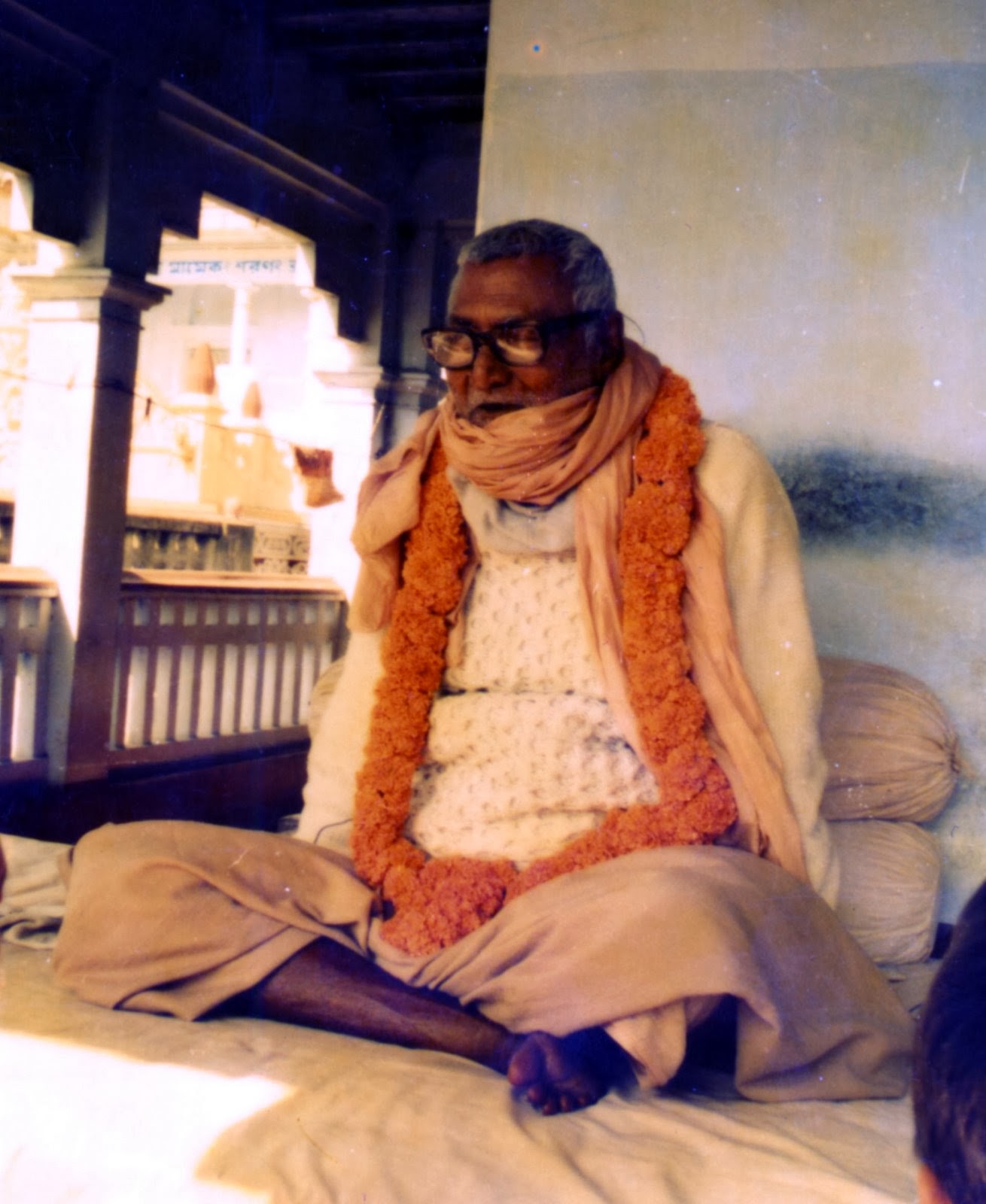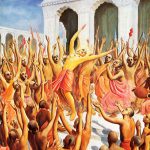 By Srila B.R. Sridhara Deva Goswami
By Srila B.R. Sridhara Deva Goswami
We can recognize a sadhu by sukrti. Apparently we can know him from the sastra, the scriptures, because the sastra helps us to know who is a sadhu, and the sadhu gives us the interpretation of the sastra. So sadhu and sastra are interdependent, but the sadhu holds the more important position and the sastra has the secondary position. The living sastra is the sadhu, but to know who is guru, who is sadhu, we are to consult the descriptions given about them in the scriptures. The symptoms of the sadhu, both of the guru as well as the disciple, have been written in the Srimad Bhagavatam, in the Bhagavad Gita and in the Upanisads. In the Srimad Bhagavatam we find,
tasmad gurum prapadyeta, jijnasuh sreyah uttamam
sabde pare ca nisnatam, brahmany upasamasrayam
“A person in search of the ultimate good should surrender to the guru who knows well the Vedic scriptures (sabda-brahman) and the Supreme Absolute Lord (Parabrahman), and for whom the mundane world holds no charm whatsoever.” (11.3.21)
And the Gita says:
tad viddhi pranipatena, pariprasnena sevaya
upadeksyanti te jnanam, jnaninas tattva-darsinah
“You will be able to attain all this transcendental knowledge by satisfying the enlightened spiritual master with prostrate obeisances, relevant inquiry and sincere service. Great souls who are most expert in scriptural knowledge and endowed with direct realization of the Supreme Absolute Truth will teach you that divine knowledge.” (4.34)
In the Upanisads, in Srimad Bhagavatam and in Bhagavad-gita it is clearly mentioned what should be the symptom of a guru and also what should be that of a disciple. If such a qualified disciple comes to a qualified guru then the real transaction begins. Otherwise, there may be so many bogus transactions; such black-marketing is going on in this world in the name of religion. But from the association of the real devotee comes devotion, bhaktis tu bhagavad-bhakta-sangena parijayate and sat-sanga prapyate pumbhih, sukrtaih purwa- sancitaih (Brhan-naradiya Purana) — one can come to a proper guide, a sadhu, as a result of his previous activity. Sukrti is of two kinds, jnata and ajnata.
Ajnata-sukrti is in the beginning when unknown to him, he is utilized in the service of the Lord through the sadhu. Suppose a man has built a dharmashala. So many persons of different types come to stay there, but because they take advantage of the energy of the builder, the results of their actions will go to him. A dacoit may come and stay. A pilgrim may also come and a sadhu also. If a dacoit will stay, then because he utilizes the energy of the owner of the dharmashala, the owner will have to take some bad reaction (papa), and will suffer for that. But if an honest man will stay there then the owner will get some punya, pious credit. In this way, papa and punya will come to him, but after duly suffering or enjoying those fruits, they will be finished. However if a real sadhu, a devotee, will stay there and utilize the owner’s energy, then that owner will acquire something permanent.
nehabhikrama-naso ‘sti, pratyavayo na vidyate
svalpam apy asya dharmasya, trayate mahato bhayat
“In this bhakti-yoga there is no loss of initial endeavor and there is no diminution of results. Even the slightest performance of this bhakti-yoga saves one from the great fear of birth and death in this material world.” Bhagavad-gita 2.40
Some permanent acquisition is deposited in his ‘account,’ and everything else, both the happiness resulting from accommodating a good, honest man in the worldly sense as well as the suffering resulting from his accommodating a dacoit, will be finished. This sort of acquisition is permanent, and when it accumulates to a sufficient degree it will attract the man to do some sort of vague service to the sadhus, though not very consciously. That is also accumulated and when it reaches a certain stage, the search for the truth will awaken within him. He will think, “For what are those sadhus living?” Then he will approach them, and if he goes in the proper mood as described in the scriptures, the transaction will begin. The association or connection with a real sadhu occurs by some underground activity known as sukrti. Sukrti is of two types: ajnata and jnata—unconsciously acquired, and consciously acquired—sat-sanga prapyate pumbhih, sukrtaih purvva-sancitaih. Of this sukrti stage, Mahaprabhu says, “brahmanda bhramite kona bhagyavan jiva guru-krsna-prasade paya bhakti-lata-bija” (C.C Madhya 19.151) “Wandering throughout the material universe, the very fortunate living entity who receives the grace of Guru and Krsna receives the seed of the creeper of devotional service.” Sukrti is described by the word bhagyavan, good fortune.
There are so many different types of sadhus. Among the tyagis there are so many different classes: the naked naga babas and others. Among the theistic group also there are so many different sections like the Ramanujas, the Ramanandis, the Nimbarkas, the Vallabhis and the Gaudiya Vaisnavas. The Gaudiya Vaisnavas are the followers of Mahaprabhu. So even in the theistic section, there is a graded classification, but it is through our sukrti that we shall be guided from the subconscious area to have a connection with a sadhu of a particular section.










